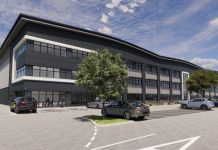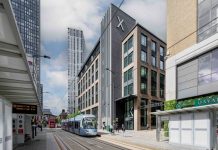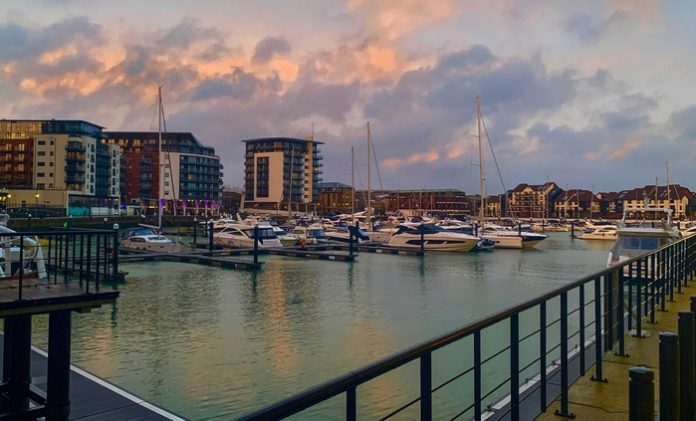Trends that were defining the future of work have been accelerated as organisations have had to adjust during the COVID-19 pandemic. Companies and individual employees are gaining the benefit of experience with large-scale home-based working. Technology has proven a useful tool to maintain collaboration and support human interaction in this forced remote work era but long term it will likely complement not replace the need for the physical workplace.
The outcome will likely be a rationalised physical footprint, made up of a different composition of space that is higher quality and better-equipped space to support employee needs. Enhanced technology, a focus on health and wellness and workplace design that supports productivity are just a few hallmarks of the enhanced workplace. The shift we envisaged towards a more fluid workplace anchored by a high quality headquarter space and supported by a network of smaller locations will become a reality more quickly than anticipated pre-COVID. In short, employees will feel more empowered and organisations will feel more comfortable with work not being bound by the physical walls of one workplace.
James Brounger, CBRE Regional Managing Director comments:
“From a South Coast perspective, we envisage that as companies focus on their future real estate strategy, there will be an increased emphasis on higher specified ‘smarter’ offices with a consequent rise in demand for the best space. Landlords will need to review their asset strategies to ensure their office buildings are meeting the increased requirements of their occupiers.”
The design and allocation of space will now be evaluated through the lens of how organisations can limit the transmission of disease, reinforce hygiene and wellbeing and safeguard employee health. This will be managed in the near-term (pre-vaccine) as organisations gradually re-open their offices through phased occupation and shift-based usage along with specific levels of social distancing applied in open plan spaces. Long-term, organisations will redefine what maximum occupancy should be. In some cases, organisations may need to de-densify office space.
We’ve always pushed for organisations to consider a balance of enclosed and open spaces. Even with the increase in remote working, some organisations may need to increase their footprint to get to a more appropriate, socially acceptable balance. The goal is to find an optimal point between having people so separated that the office lacks energy versus the point at which people feel so exposed that they withdraw from interaction. Now (more than ever) we need to be thoughtful about the size of workstations and the distances of spaces amongst people and throughout the office.
Occupiers will place a stronger emphasis on building specifications and healthy workplace features as they focus on employee health to preserve long-term productivity.
Naturally, people will be concerned about returning to the office and organisations will go to great lengths to ensure their employees are returning to a healthy working environment. Initially this may mean the introduction of self-cleaning surfaces, an increased emphasis on personal hygiene, sanitisation stations and foot and motion activated entry and exit systems.
We may also see a shift to providing personal technology, devices and accessories to limit the transmission of germs through sharing. This will be a challenge for organisations operating on virtual desktops and thin client systems where devices are shared by design.
Long-term, we’ll see a preference for buildings with ‘healthy’ credentials related to indoor air quality and ventilation, as fresh air reduces the spread of airborne germs. Currently, buildings are required to comply with a minimum 20% fresh air intake, while some choose to exceed this requirement by going up to 30%. Revisiting the minimum requirement may be a next step for facility operators. The focus on fresh air could potentially hasten the development of more LEED and WELL-certified buildings. Organisations will continue to emphasise the importance of employee wellness and there will be a stronger call for scientific research that evidences the ‘human return’ on investing in wellness programmes and workplace features/services that support these objectives.
Before COVID-19, many organisations deemed the advantages of having employees physically located together under one roof (or on one campus) to be greater than the potential risk to the business should something go wrong.
The outbreak will force organisations to reassess Business Continuity Planning, particularly the need to maintain back up locations for critical business functions and essential employees. We expect to see organisations consider the formation of alternate teams that can be deployed on different schedules and at different locations (or remotely) during future outbreaks. We may also see a move away from large centralised offices for business-critical operations with organisations instead choosing a greater number of smaller operations in different locations around the world.
Inside the office, we will see the need to ‘compartmentalise’ open plan neighbourhoods to control airflow and keep social distances during times of seasonal illness. Furthermore, organisations will invest in building personal resilience among their employees. This will take the form of structured training to support remote working and mechanisms to balance work and life commitments and tactics for coping during times of high stress and uncertainty.





















